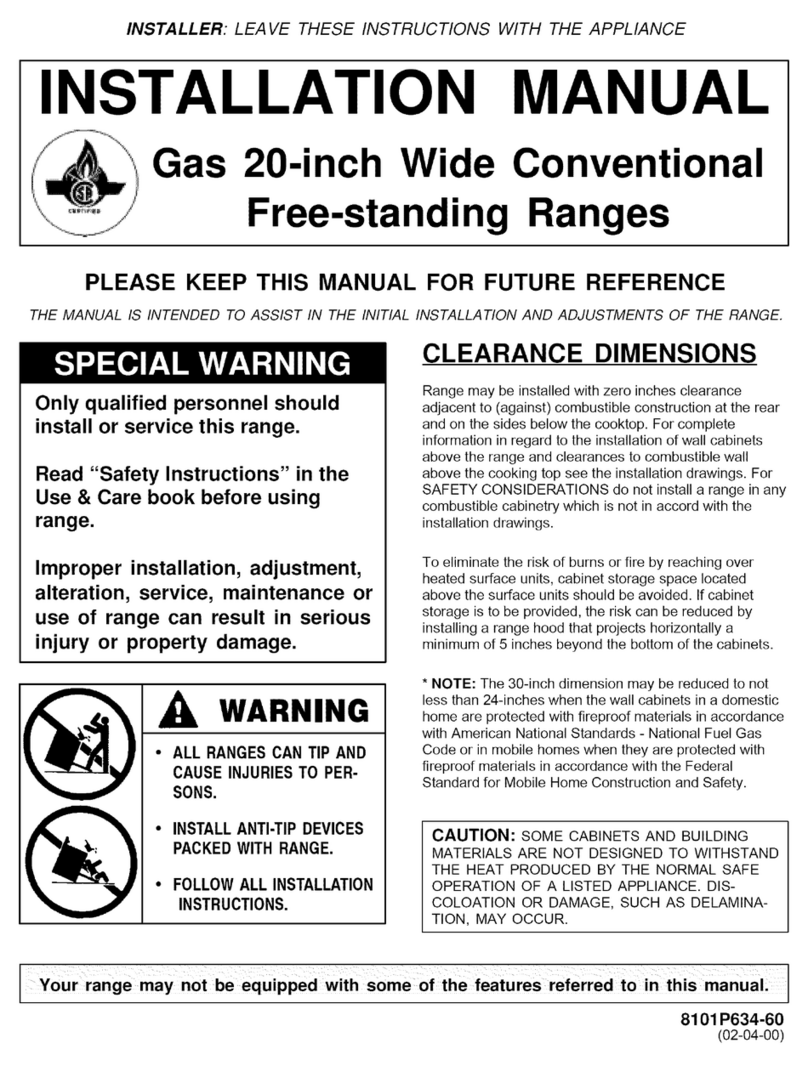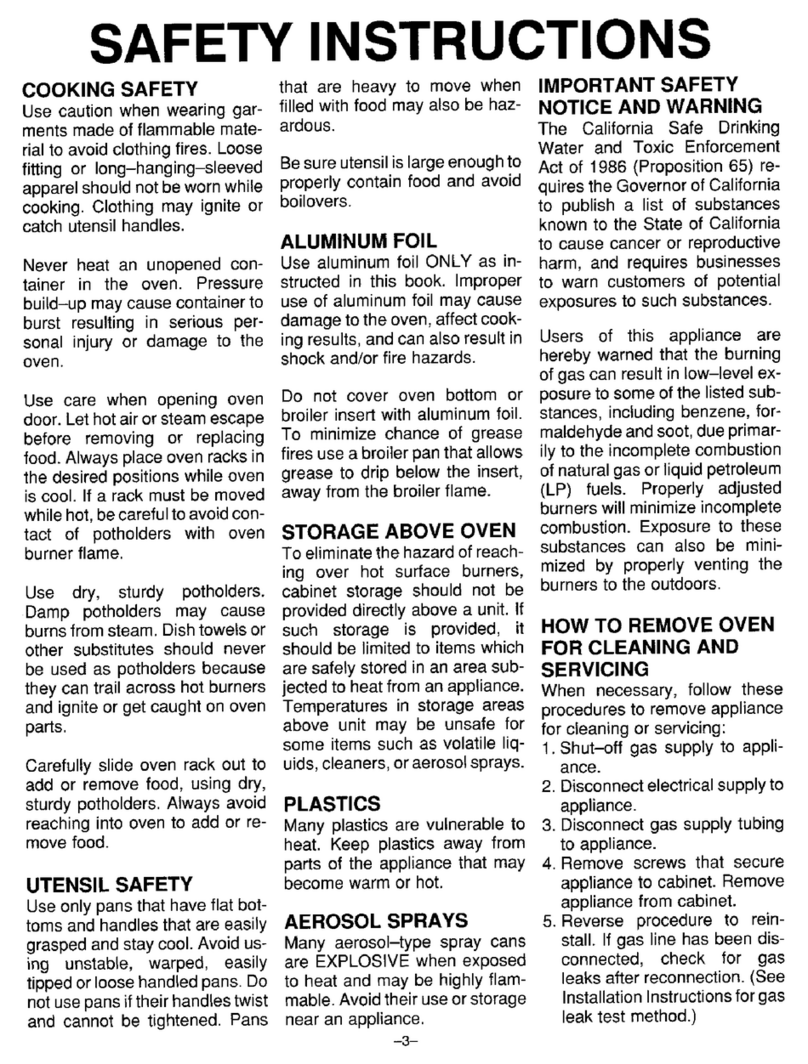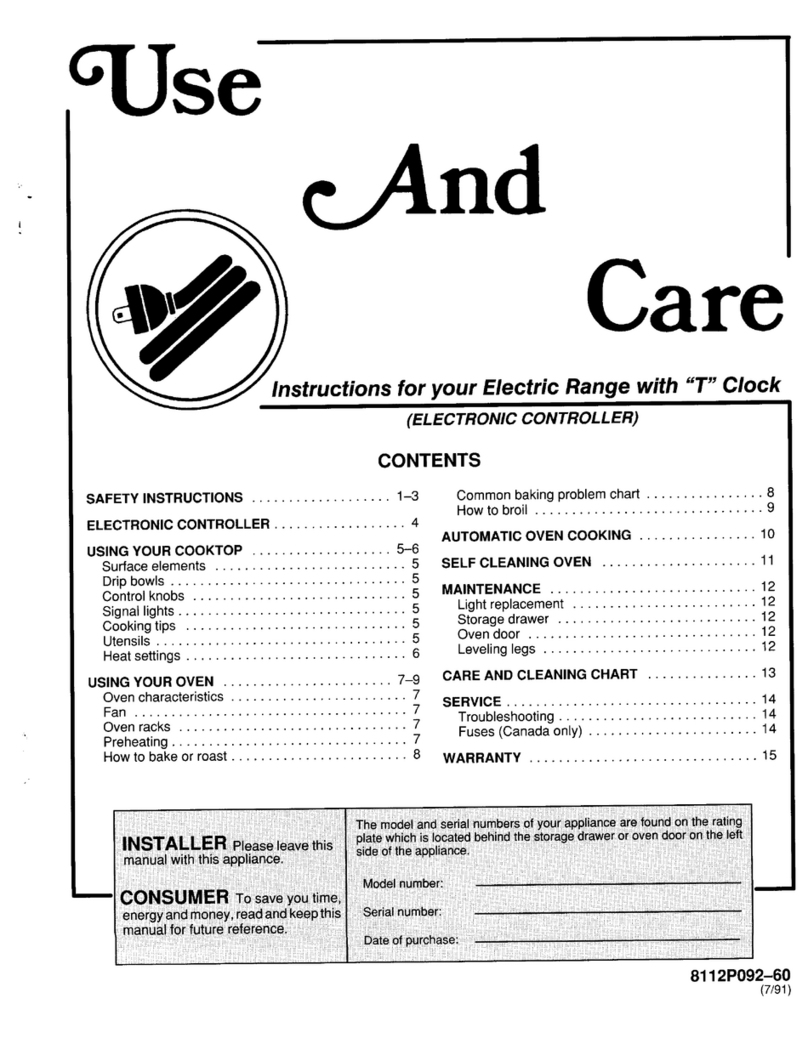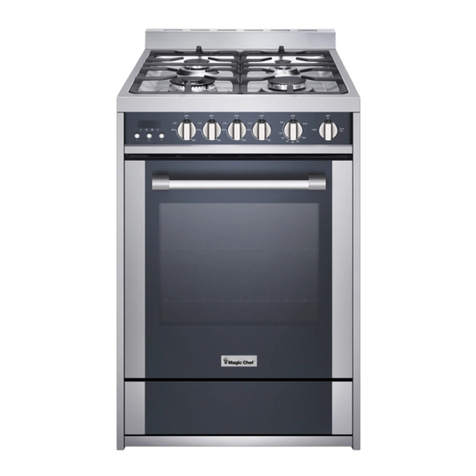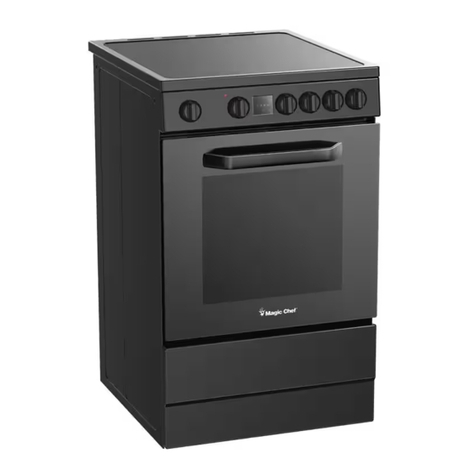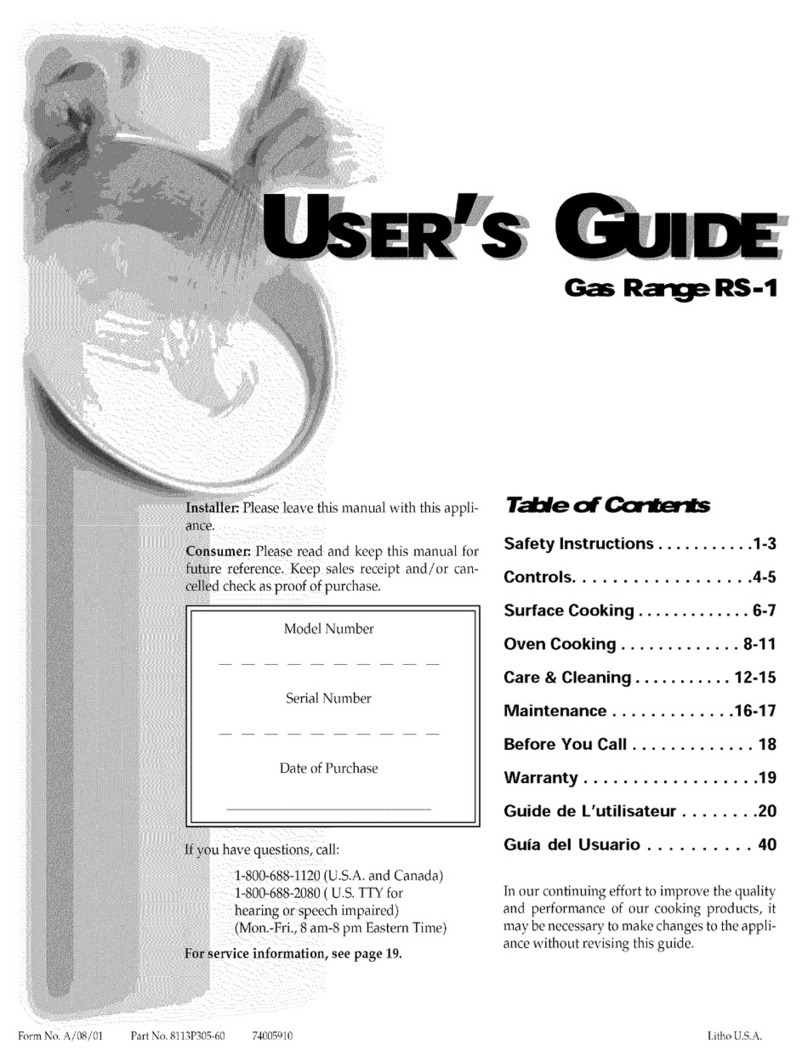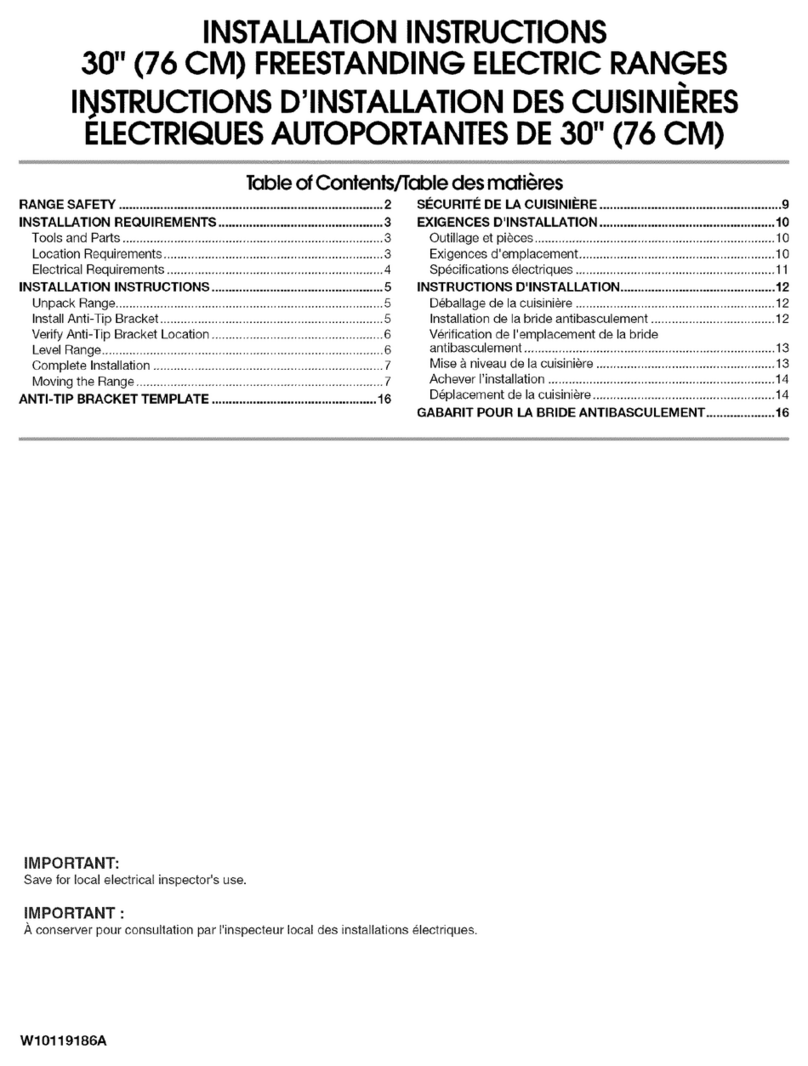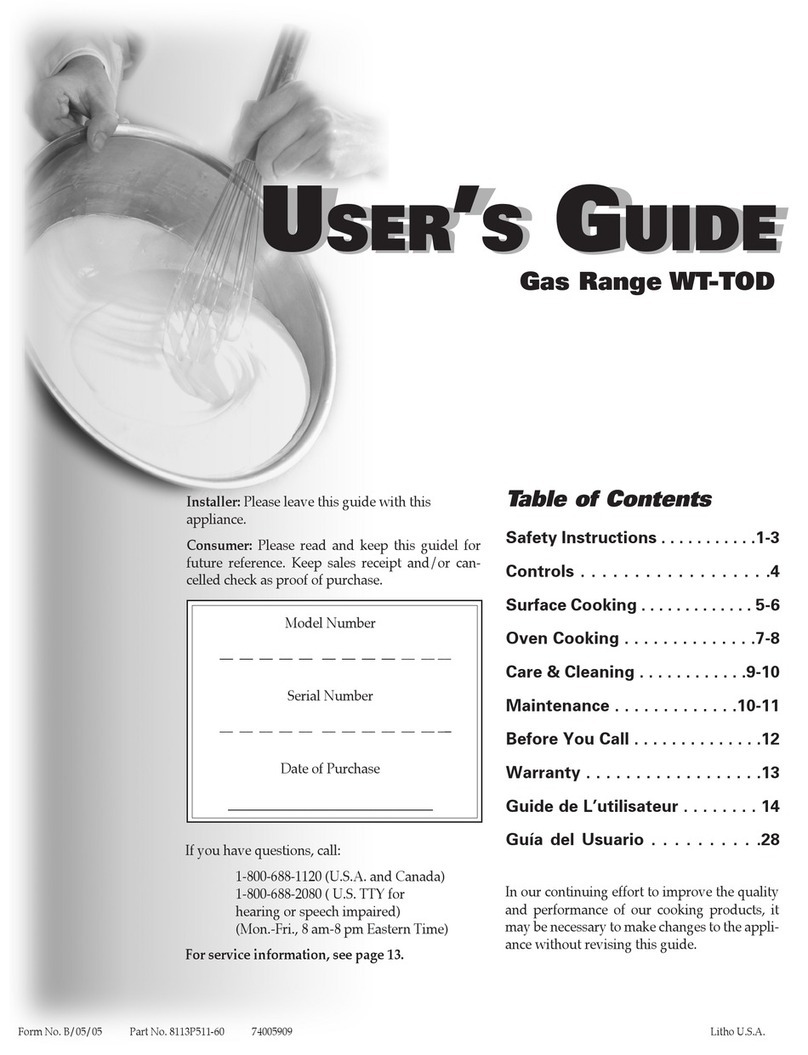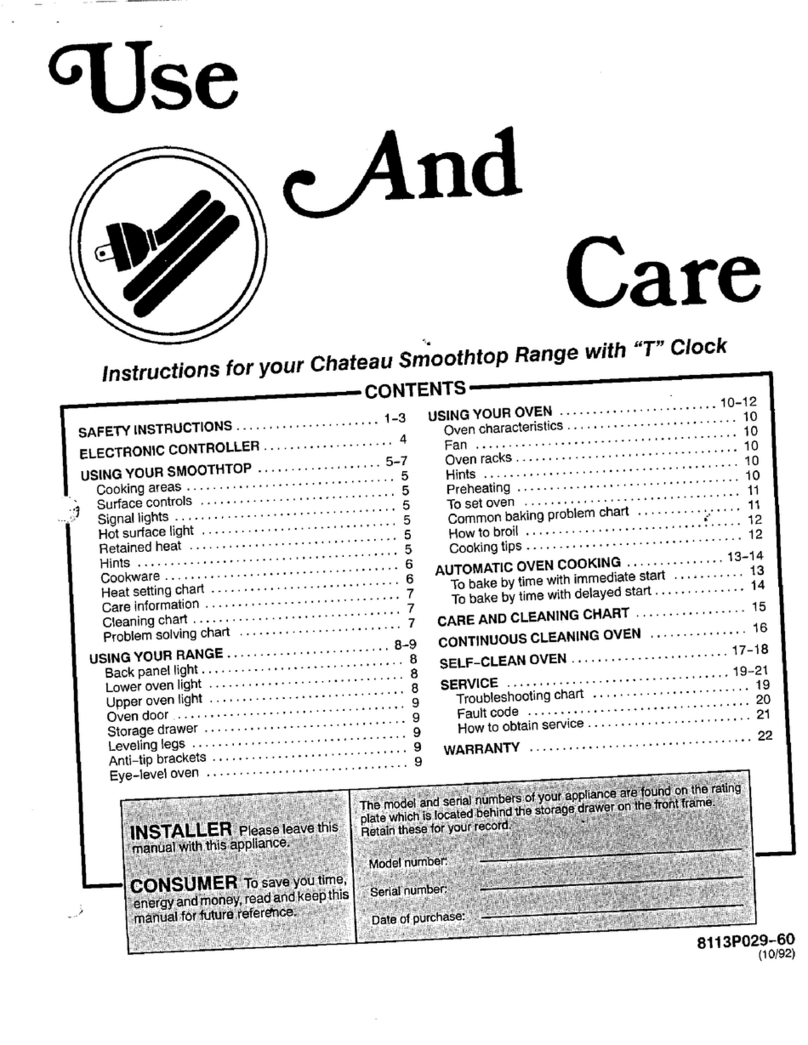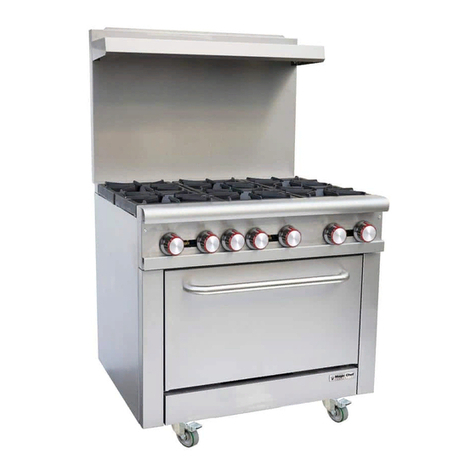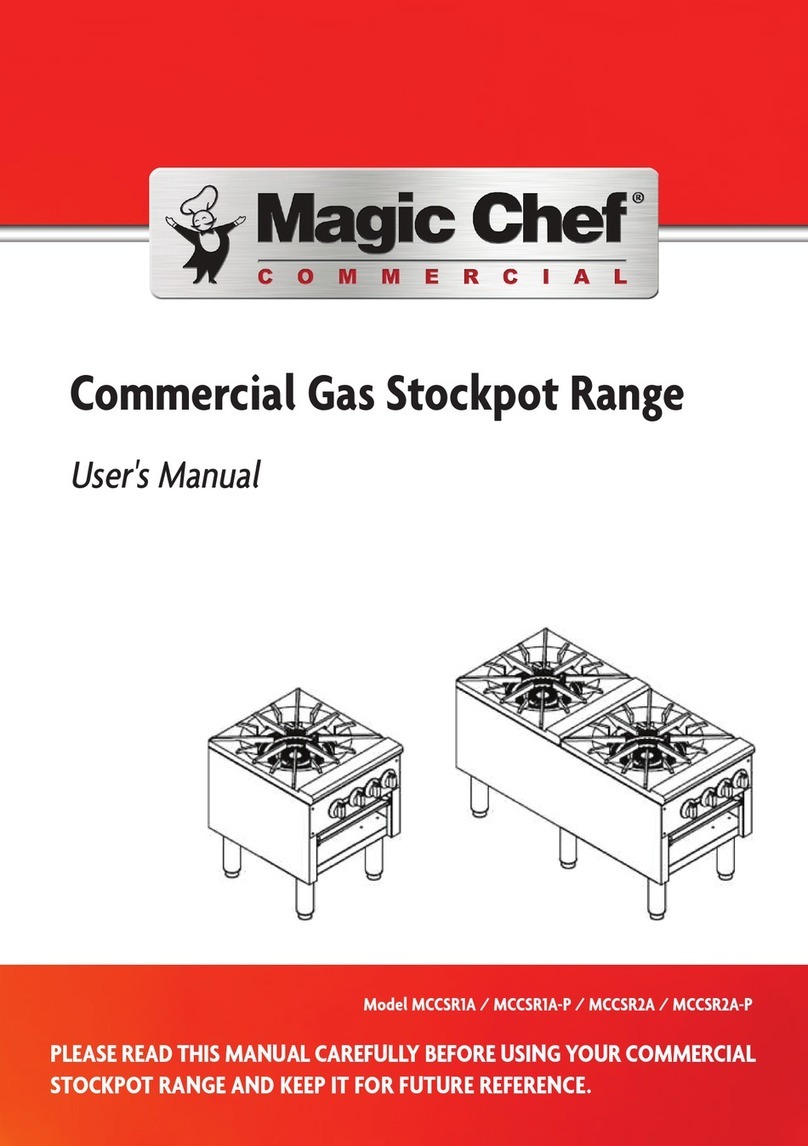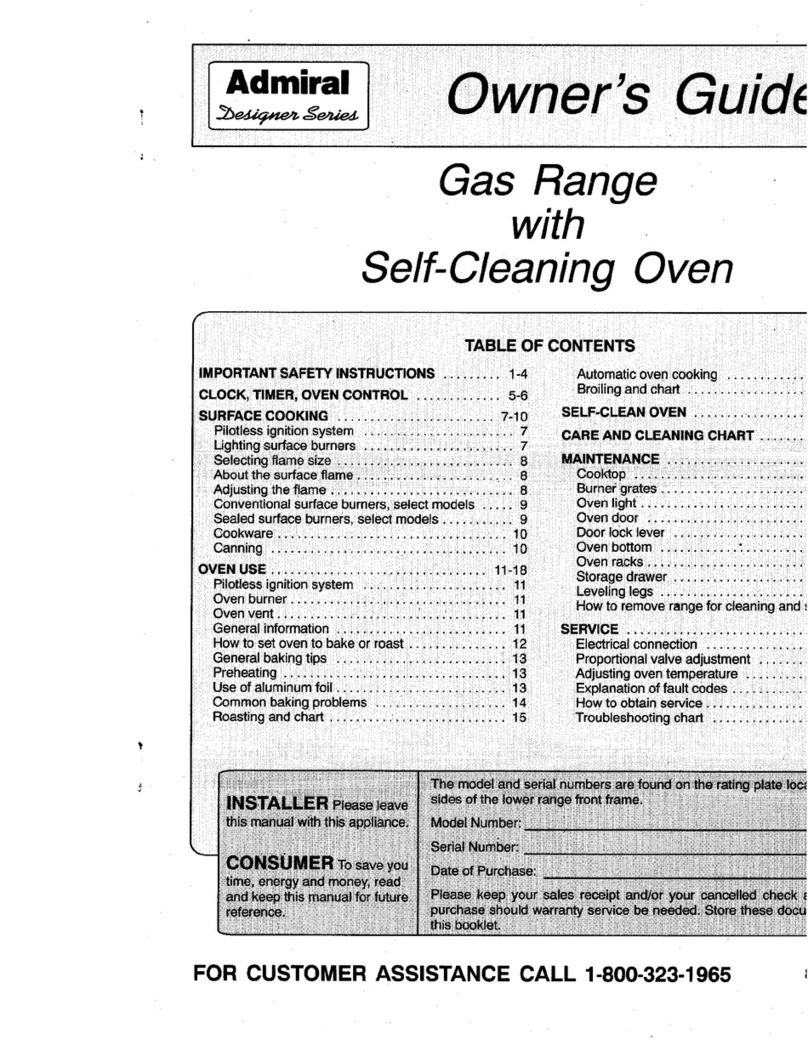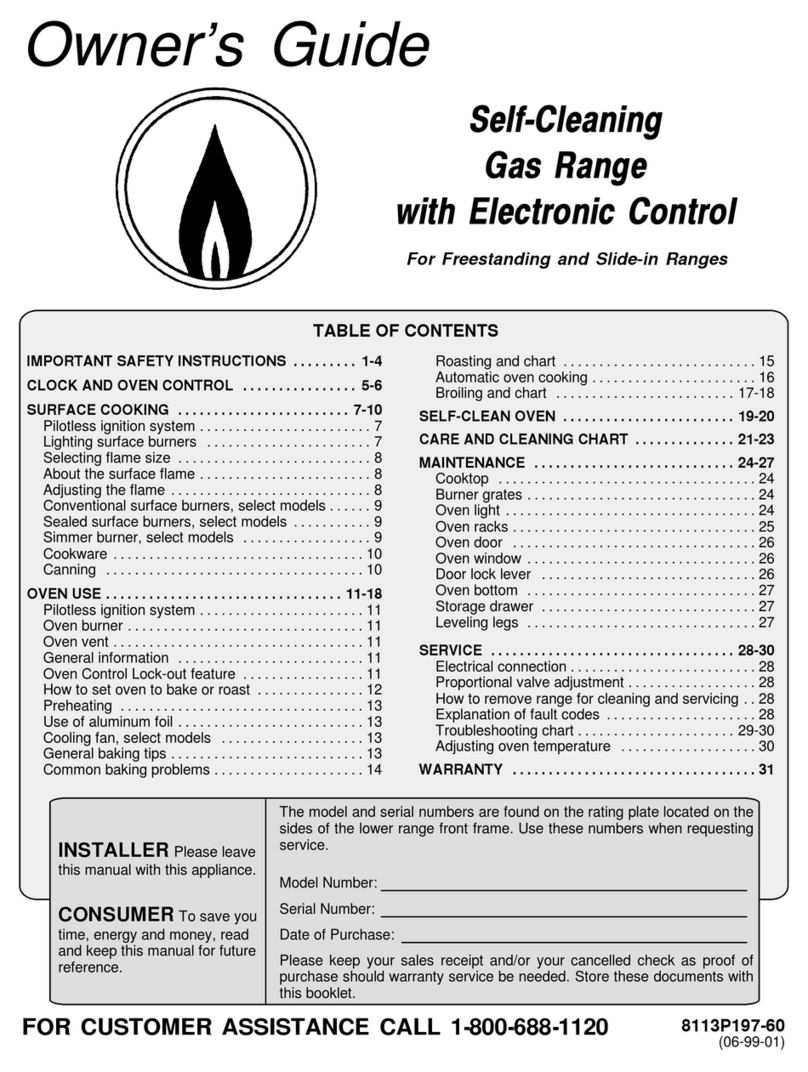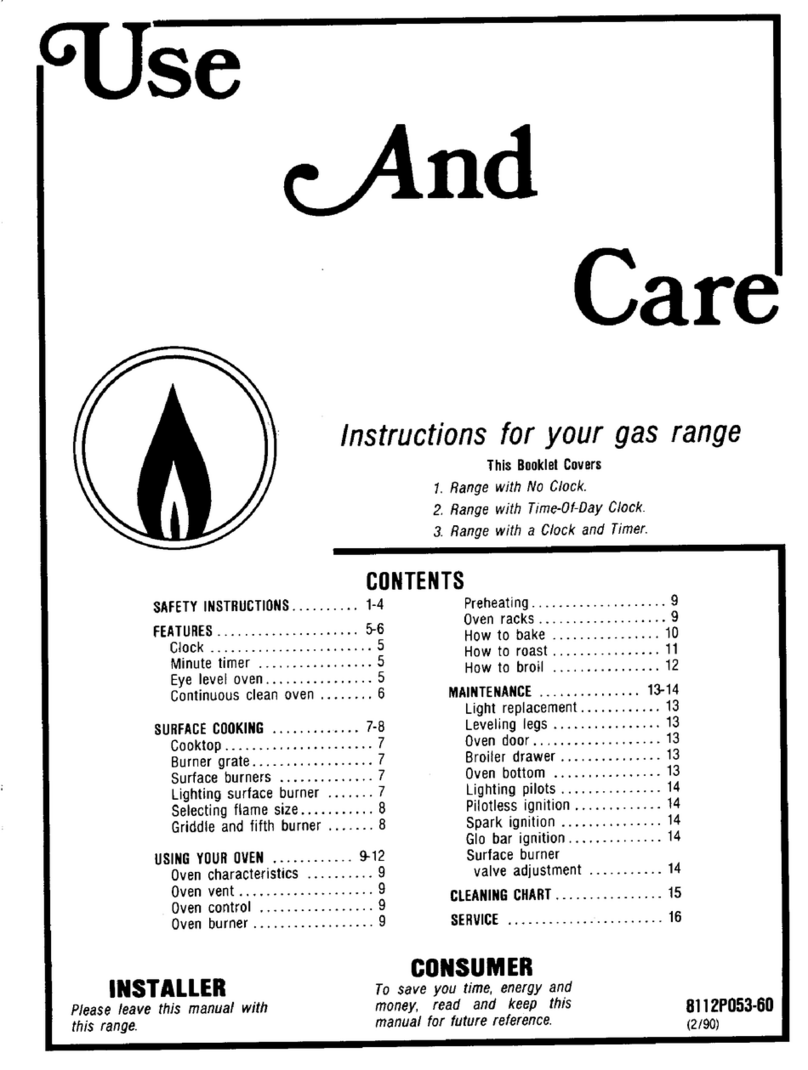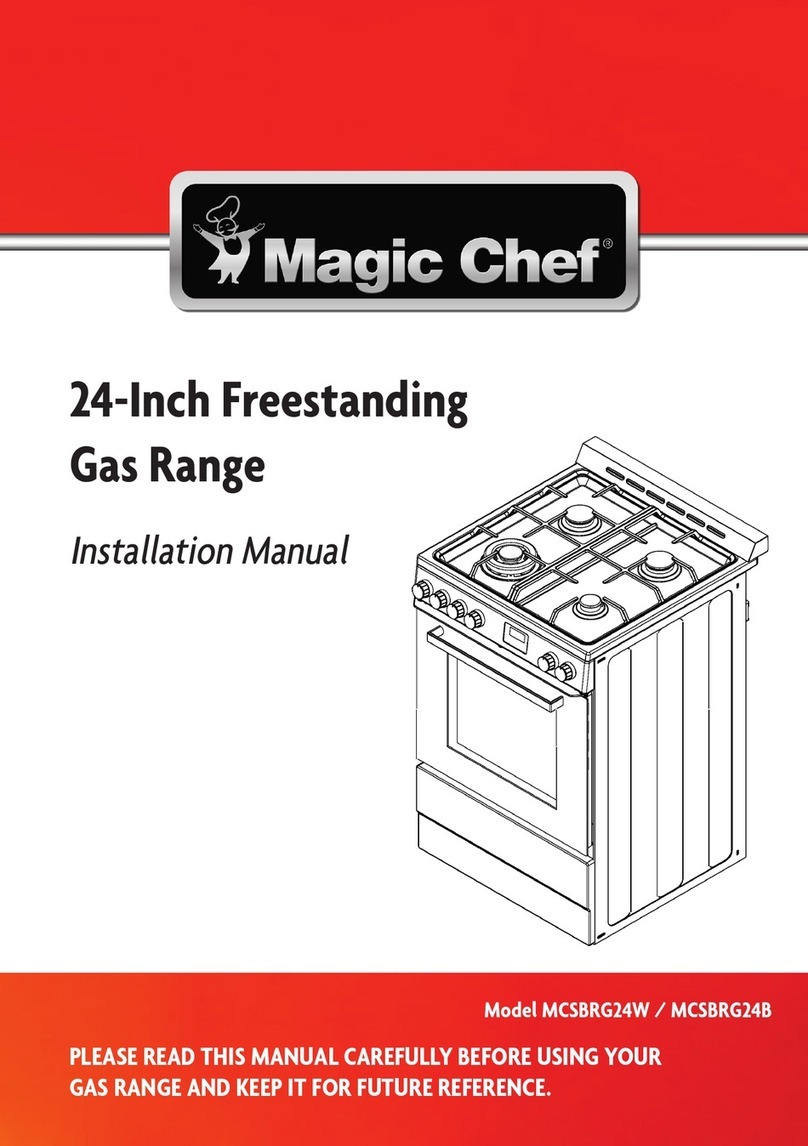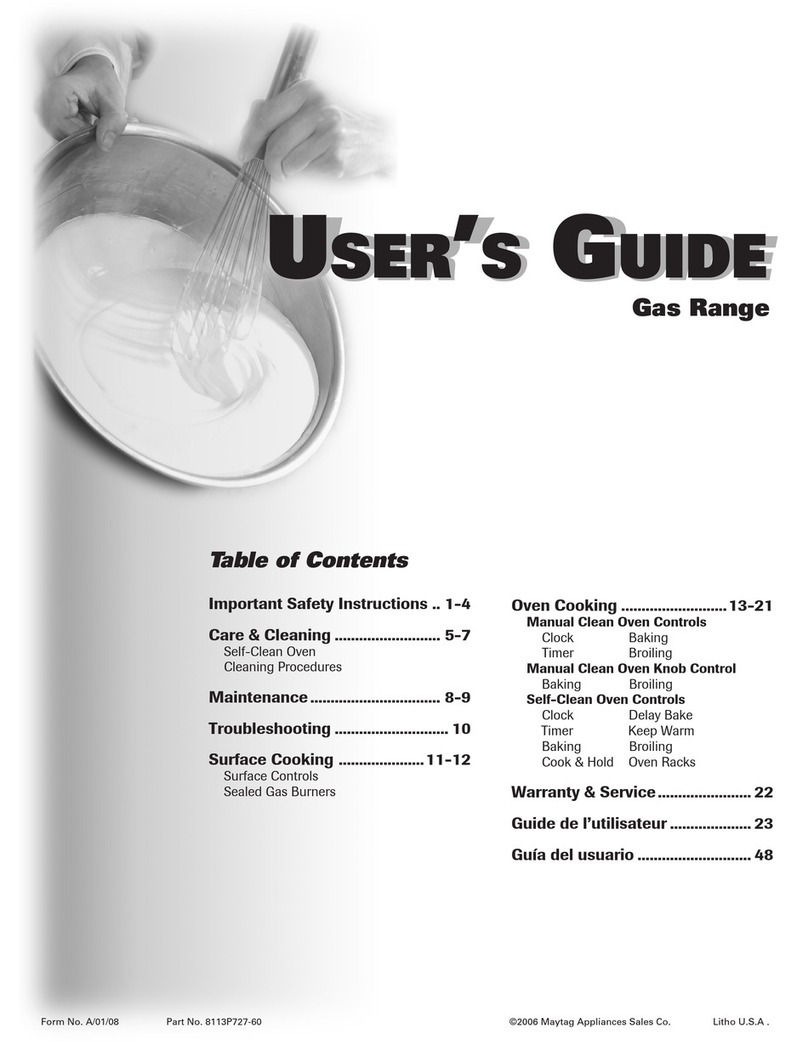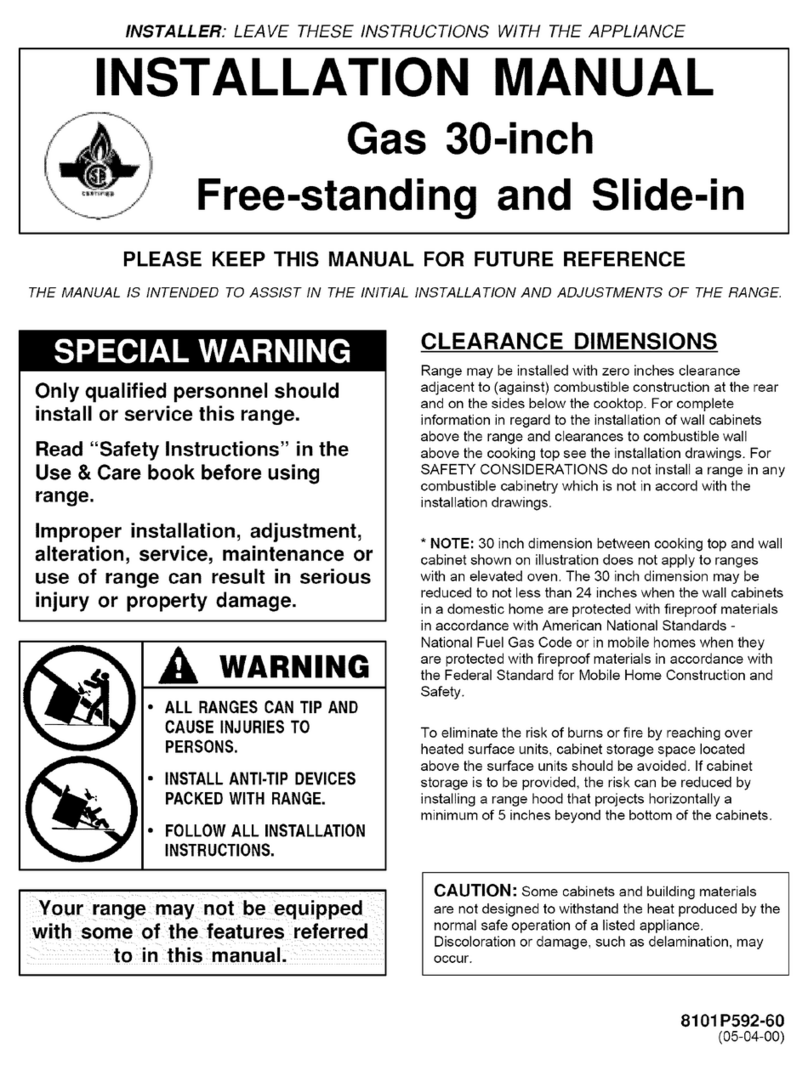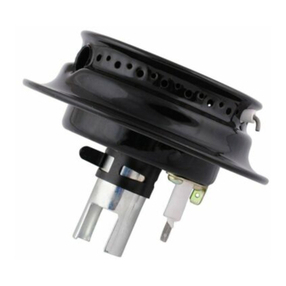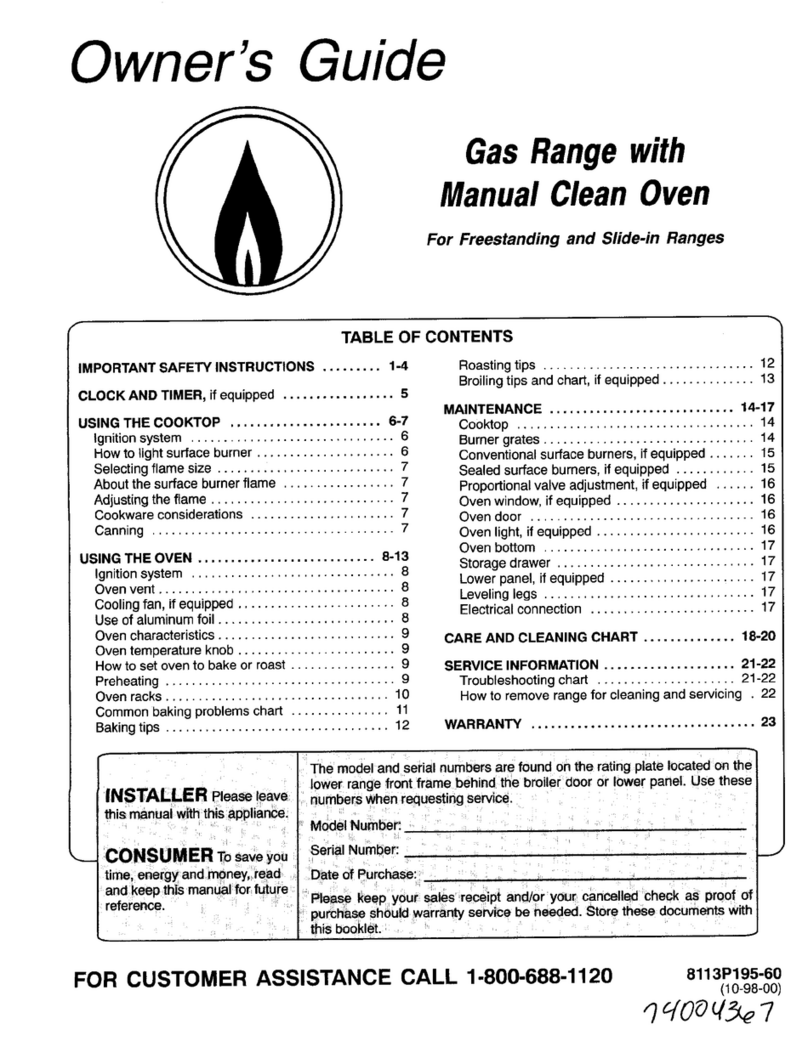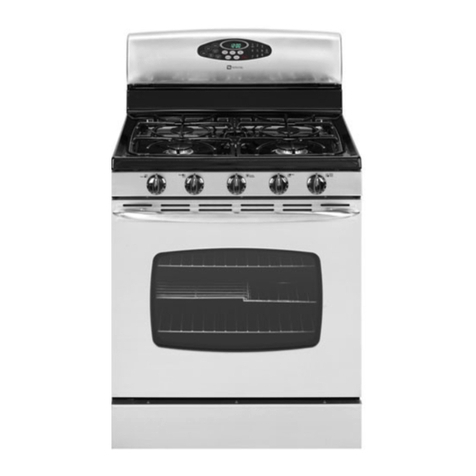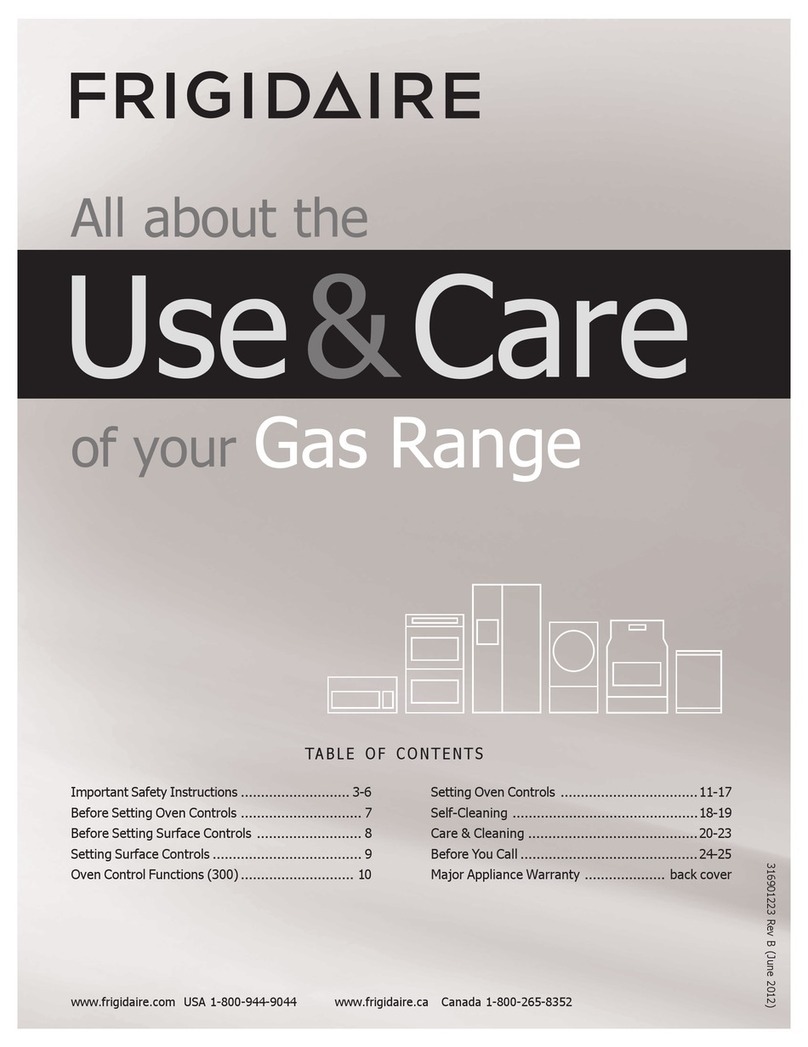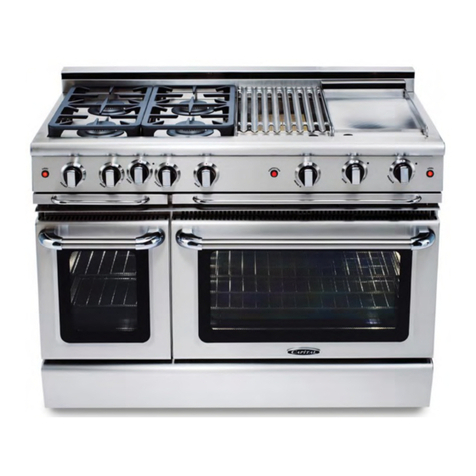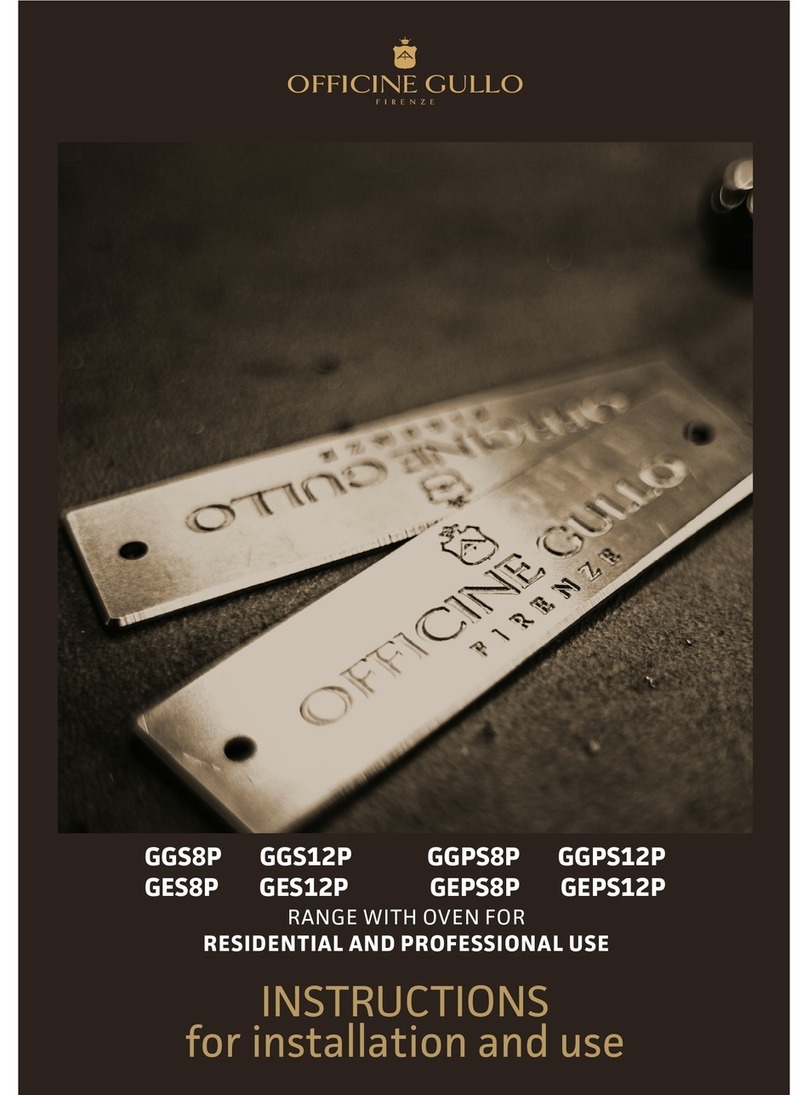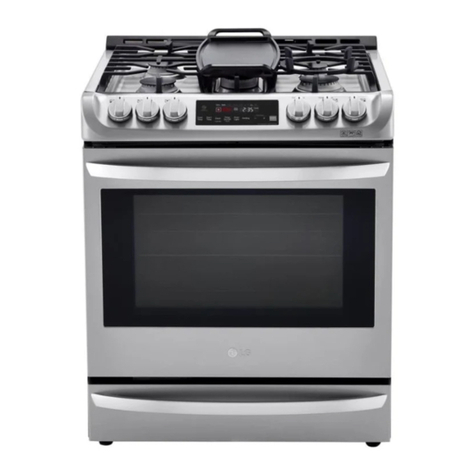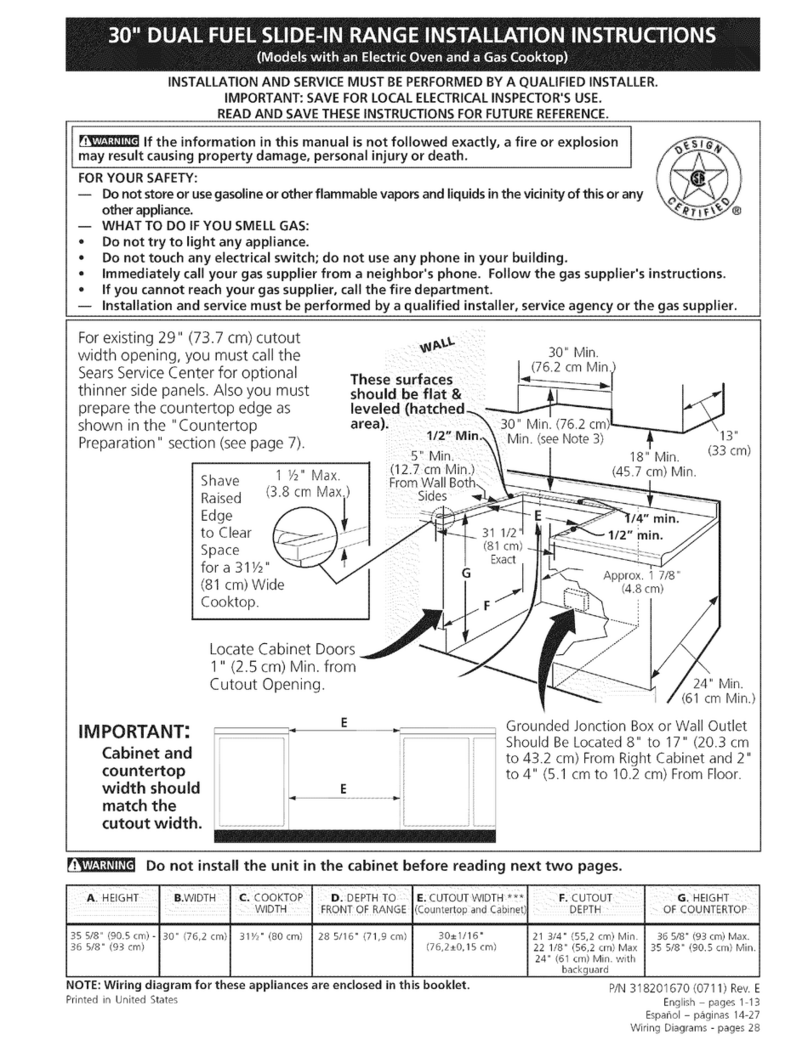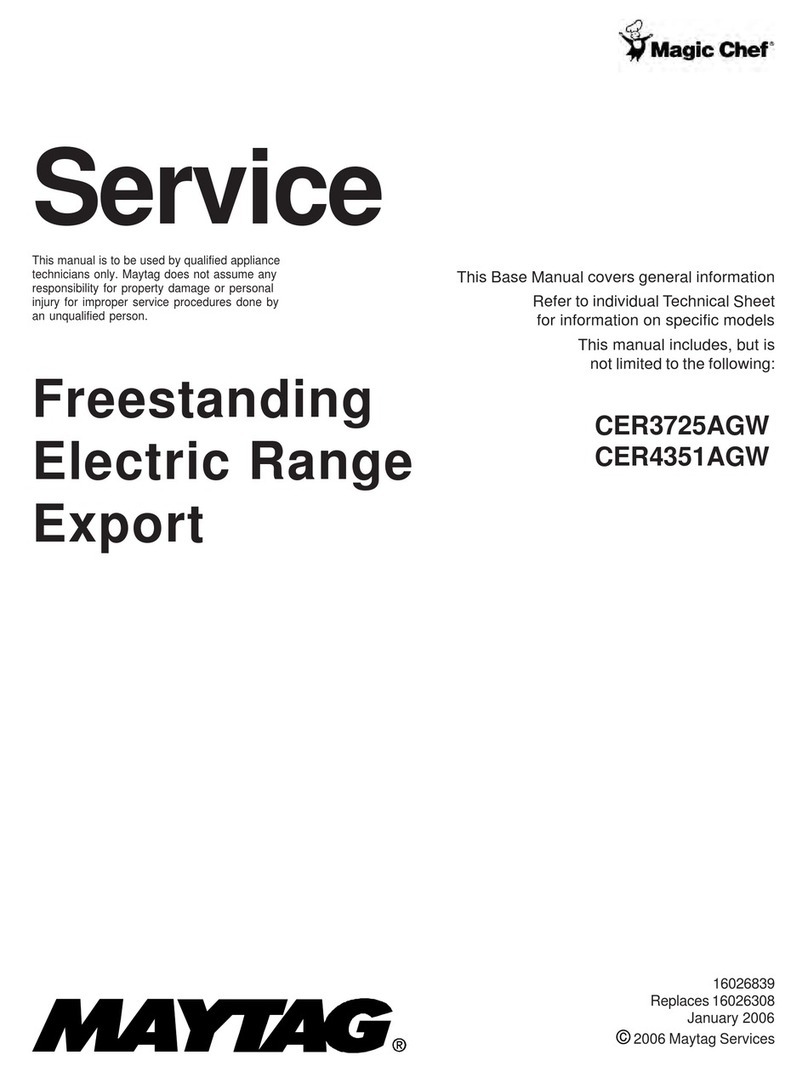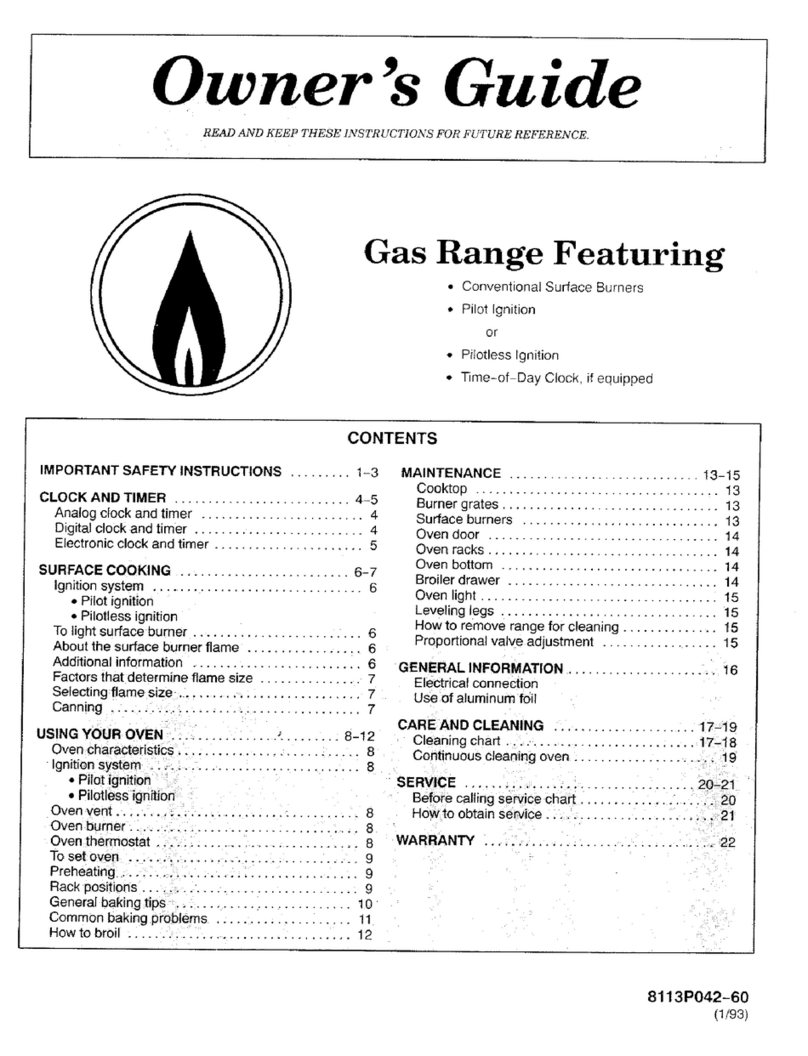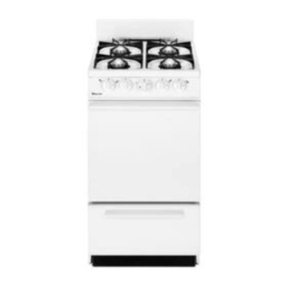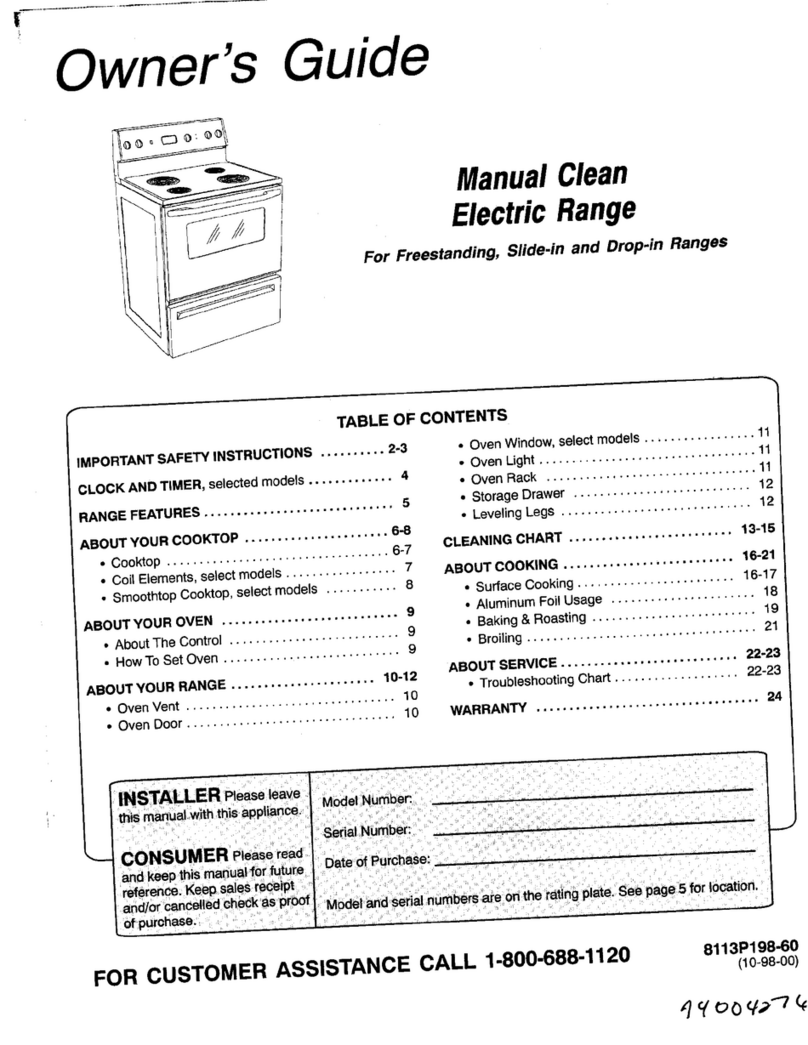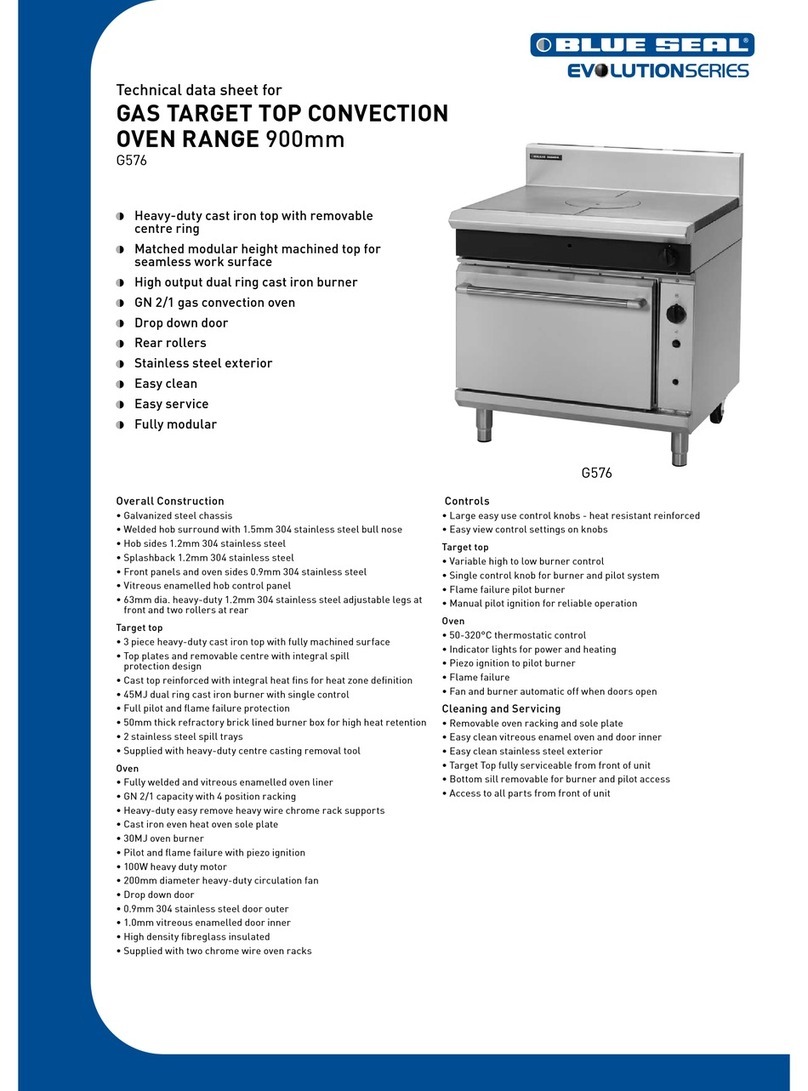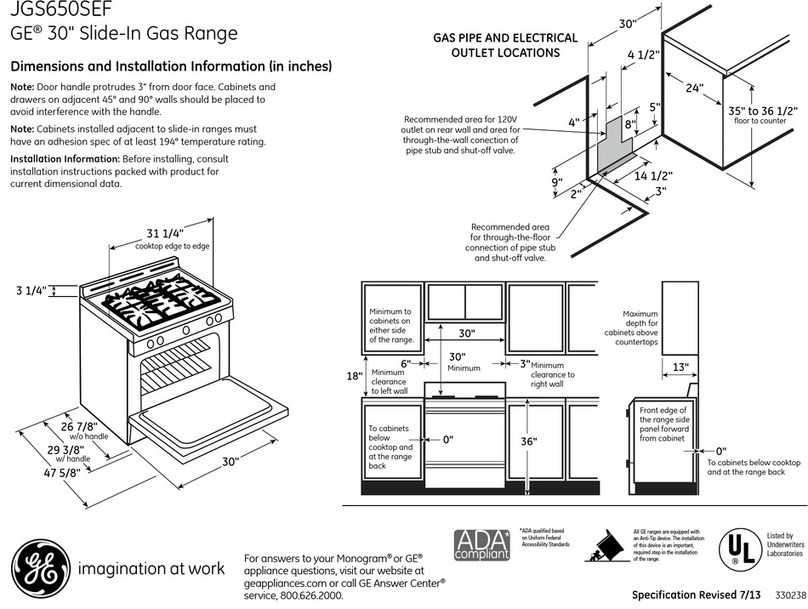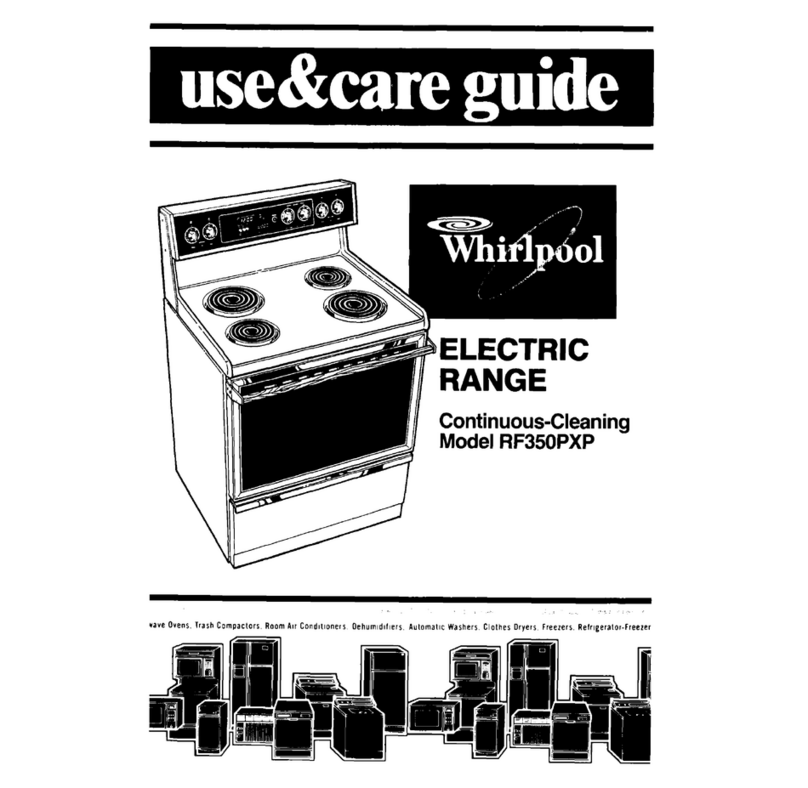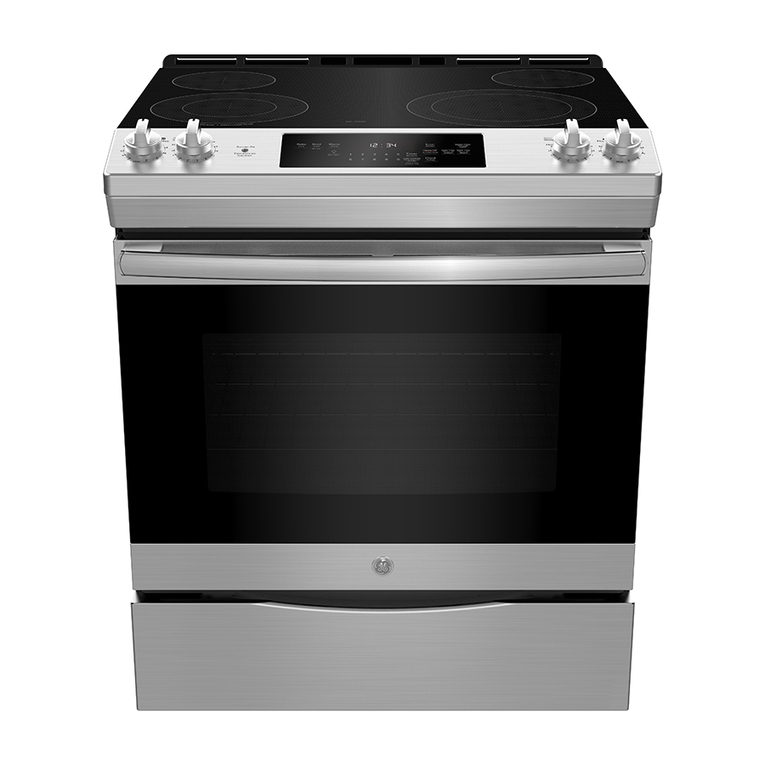SAFETY INSTRUCTIONS
GLAZED COOKING UTENSILS - Only certain types VENTILATING HOODS:
of glass, glass/ceramic, ceramic, earthenware, or CLEAN VENTILATING HOODS FREQUENTLY -
otherglazed utensilsaresuitablefor range-top serv- Greaseshouldnotbeallowedtoaccumulateonhood
icewithoutbreakingcluetothesuddenchangeintem- or filter.Whenflamingfoodsunderthehood,turnthe
perature, fanoff.Thefan, if operating,may spreadtheflame.
IMPORTANT SAFETY NOTICE AND WARNING
UTENSIL HANDLES TheCaliforniaSafeDrinkingWaterandToxicEnforce-
_ _ SHOULD BE ment Actof 1986 (Proposition 65) requiresthe GOVer-
TURNED INWARD nor of California to publisha list of substances known
ANDNOT EXTENDto the State of California to cause canceror reproduc-
OVER ADJACENT tive harm,and requiresbusinesses towarncustomers
SURFACE UNITS- of potential exposures to such substances.
To reduce the risk of
burns, ignition of flam- Usersof this appliance are hereby warned that when
mable materials, and the appliance is engaged inthe self-clean cycle there
spillage due to unin- maybesome low-level exposure to someofthe listed
tentionalcontactwiththe utensil,the handle ofauteri-substances, including carbon monoxide.Exposureto
sil should bepositioned sothat it isturned inward, and these substances can be minimized by properly vent-
does net extend over adjacent surface elements, ingthe appliancetothe outdoors during theself-clean
cycle.
DO NOT SOAK REMOVABLE HEATING ELE-
MENTS - Heating elements should never be im- DEEP FAT FRYERS:
mersed in water. Immersing element in water would Use extremecaution when movingthe greasekettleor
damage insulatingmaterialinsideelement, disposing of hot grease.
DO NOT TOUCH SURFACEELEMENTS OROVEN
OVENS: ELEMENTS, AREAS NEAR ELEMENTS OR INTE-
USE CARE WHEN OPENING DOOR - Lethotair or RIOR SURFACES OF OVEN- Elementsmaybe hot
steam escape before removingor replacing food. even though theyaredark incolor.Areas nearsurface
elements and interior surfaces of oven may become
DO NOTHEAT UNOPENEDFOOD CONTAINERS - hot enough to cause burns. During and after use, do
Build-up ofpressuremaycausecontainerto burstand not touch or let clothing or other flammable materials
result in injury, contact heating elements, areas near elements or in-
terior surfaces of oven until they havehad sufficient
time to cool.Among these areas arethe cooktop, sur-
KEEPOVEN VENT DUCTS (located under rear ele- faces facing the cooktop,ovenvent opening and sur-
ment; rear corner of cooktop; between oven door and faces near this opening,oven door, and ovenwindow.
control panel of wall oven or on backguard) UNOB- Also, do not allow aluminum foil, meat probes or any
STRUCTED.Blockage of vent prevents properoven other metal object, other than a utensilon a surface
air circulation and will affect oven performance.Avoid element, to contact heating elements.
touching oven vent area while oven ison andfor sev-
eral minutesafter ovenisturned off.Some partsofthe ANTI-TIP BRACKET:
vent and surrounding area become hot enough to WARNING: To reduce the risk of tipping of the appli-
cause burns, ance from unusual usage or by excessive loading of
the oven door, the appliance must be secured by a
PLACEMENTOFOVENRACKS- Alwaysplaceoven properlyinstalled anti-tip device,To check if device is
racks in desired location while oven is cool. If rack installed properly: Use a flashlight and look under-
mustbe movedwhile hot, use care toavoid contact of neath rangeto see that one ofthe rear leveling legs is
potholder with oven element, engagedinthe bracketslot.Whenremovingappliance
forcleaning, be sure anti-tip device isengaged when
rangeisreplaced. Theanti-tip devicesecures therear
leveling legto the floor, when properly engaged.
-2-
